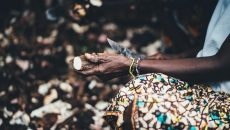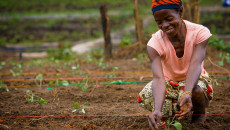MONROVIA, Montserrado – According to a 2020 report on the state of food security and nutrition, 97.8 percent of Liberians cannot afford to regularly consume a healthy diet. Out of 170 countries examined by the report authors, maintaining a healthy diet is most unaffordable in Liberia.
In fact, Liberia is one of 22 countries that the Food and Agriculture Organization of the United Nations, FAO, considers to be facing a protracted crisis. Authored in collaboration with the International Fund for Agricultural Development, UNICEF, the World Food Programme, and the World Health Organization, the report notes that most of Liberia’s population cannot afford to regularly consume a healthy diet.
In the next country most impacted after Liberia, Burundi, 97.4 percent of the population cannot afford to consume a healthy diet. Data was not available on the costs in countries such as Afghanistan, North Korea, Eritrea, Somalia, South Sudan, Syria, and Yemen.
The report compares the cost of three categories of meals across all examined countries – an energy sufficient diet, a nutrient adequate diet, and a healthy diet. All diets were calculated assuming that quantities were sufficient to meet the energy needs of an adult of reproductive age, 2,329 kcal.
An energy sufficient diet is considered the bare minimum and provides adequate calories for energy balance for work each day. Only the basic starchy staple for a given country (e.g. maize, wheat, or rice only) is considered in this diet. According to the report, 75.7 percent of Liberians can afford this diet.
A nutrient adequate diet not only provides adequate calories, but also provides a balanced mix of carbohydrates, protein, fat, essential vitamins, and minerals needed to prevent deficiencies and avoid toxicity. Only 14.1 percent of Liberians can afford this diet.
A healthy diet provides adequate calories and nutrients and includes a more diverse intake of foods from several different food groups. The report says this diet is intended to meet all nutrient intake requirements and to help prevent malnutrition in all its forms, including diet-related non-communicable diseases. Only 2.2 percent of Liberians can afford this diet.
Sub-Saharan Africans, in general, cannot afford a nutrient adequate diet, according to the publication: “In fact, the nutrient adequate diet is not affordable in Western Africa, as it represents 109 percent of average food expenditures, with countries such as Niger and Liberia, where this diet costs, respectively, two and almost four times more.”
When it comes to healthy diets, again Liberia joins other African countries like Burundi, Niger, and Togo in a precarious situation where “the cost of healthy diets is between 4 and 7 times higher than average food expenditures, with Liberia reporting the highest unaffordability.”
The data released by the report can allow countries to understand the state of food insecurity and malnutrition in their countries. While the world has been making progress to ensuring safe, nutritious, and sufficient food for all people, the report notes that “five years after the world committed to [ending] hunger, food insecurity, and all forms of malnutrition, we are still off-track to achieve this objective by 2030.”
It continues, “The new estimate for 2019 has revealed that an additional 60 million people have become affected by hunger since 2014. If this trend continues, the number of undernourished people will exceed 840 million by 2030. Hence, the world is not on track to achieve Zero Hunger, even without the negative effects that COVID-19 will likely have on hunger.”
The report predicts that the COVID-19 pandemic may add an additional 83 to 132 million people to the ranks of the undernourished in 2020.
“Beyond hunger, a growing number of people have had to reduce the quantity and quality of the food they consume,” it added. “Two billion people, or 25.9 percent of the global population, experienced hunger or did not have regular access to nutritious and sufficient food in 2019. This situation could deteriorate if we do not act immediately and boldly.”
In 2019, the report notes that 1.8 million Liberians were undernourished, 2.9 million were severely food insecure, while 4.3 million were moderately food insecure. Additionally, 200,000 children under the age of five in Liberia were considered stunted. By the same year, 200,000 women of reproductive age (15-49) were affected by anemia and less than 100,000 babies were born with low birth weight.



